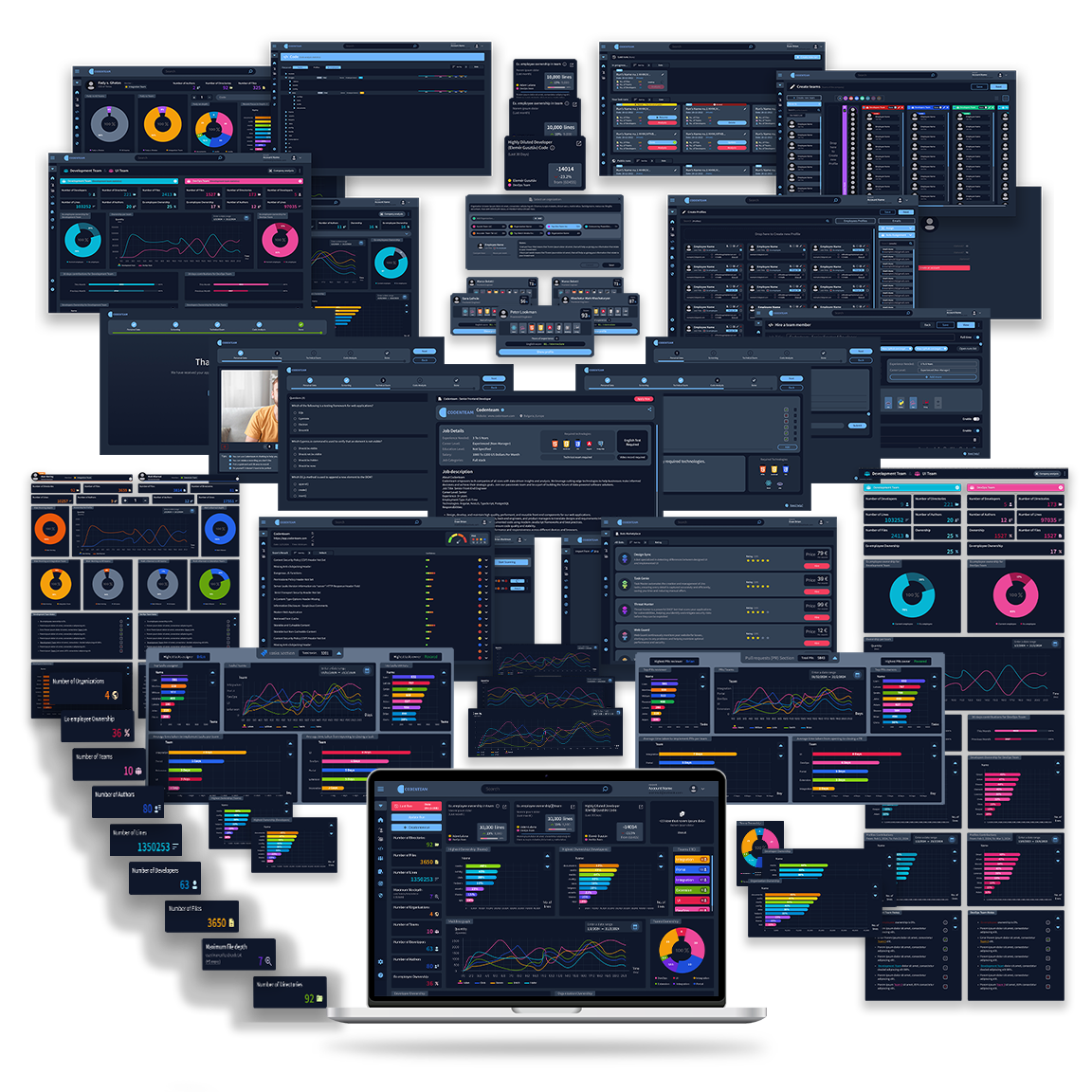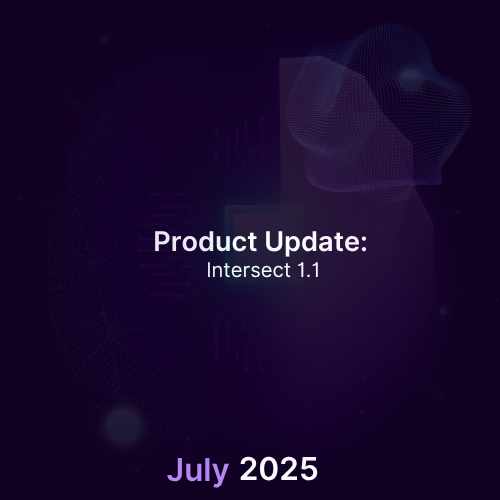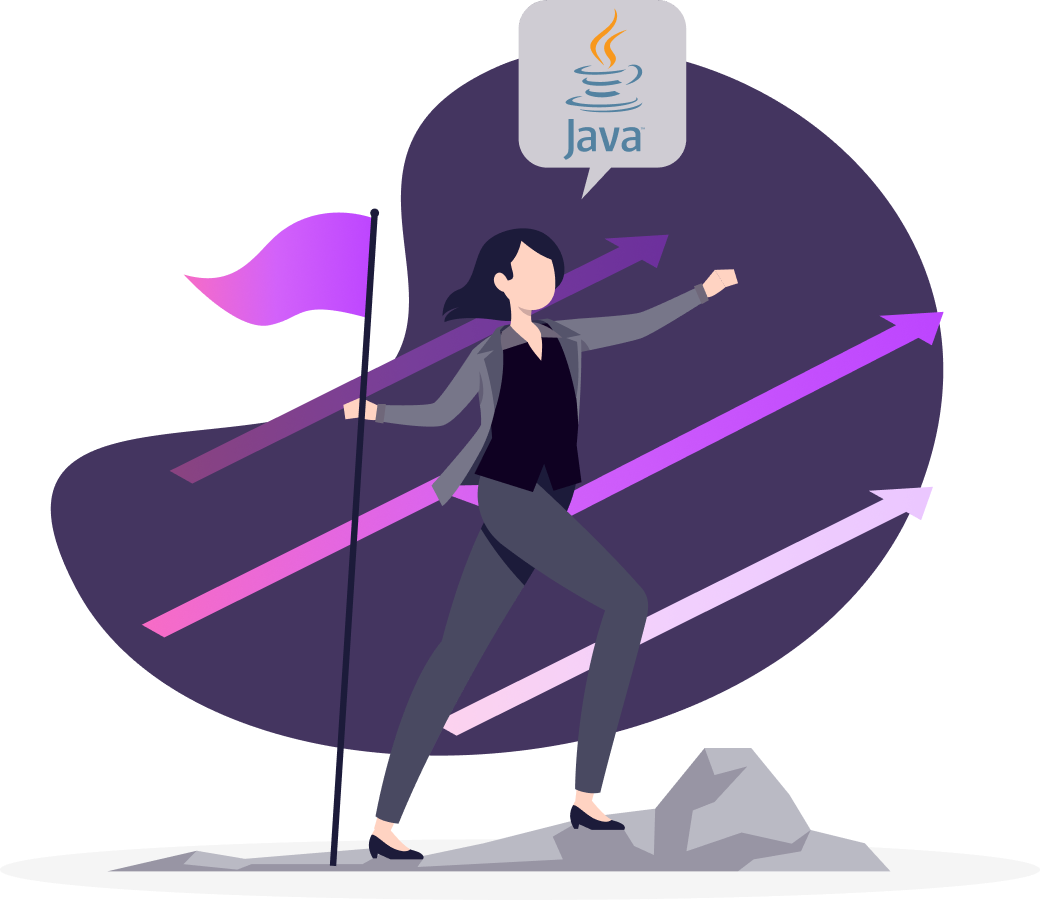Identifying and mitigating risks in your codebase is critical to advancing your tech infrastructure, that’s why we created Codenteam In the ever-evolving landscape of software development, identifying and mitigating risks in codebases is more critical than ever. Codenteam, with its powerful suite of tools and AI capabilities, is redefining how risks are detected, analyzed, and addressed. By leveraging analytical models, extraction tools, LLM models, and RAG (Retrieval-Augmented Generation) databases, Codenteam offers an unparalleled approach to code analysis and risk management.
This blog post walks through a recent project showcasing how Codenteam integrates various technologies to create a seamless and effective risk analysis pipeline—from code scans to hiring engineers for issue resolution.
Starting the Analysis: Comprehensive Scanning
Our analysis began as usual, with the creation of a new project in Codenteam. This included a multi-faceted code analysis pipeline comprising:
- Code Scan: A deep dive into the codebase to detect potential vulnerabilities and bad coding practices.
- License Assessment: Ensuring compliance with open-source license requirements and detecting conflicting or restrictive licenses.
- Dependency Analysis: Identifying outdated or vulnerable third-party libraries.
- Penetration Testing: Conducting both passive and active pentests to simulate real-world attack scenarios.
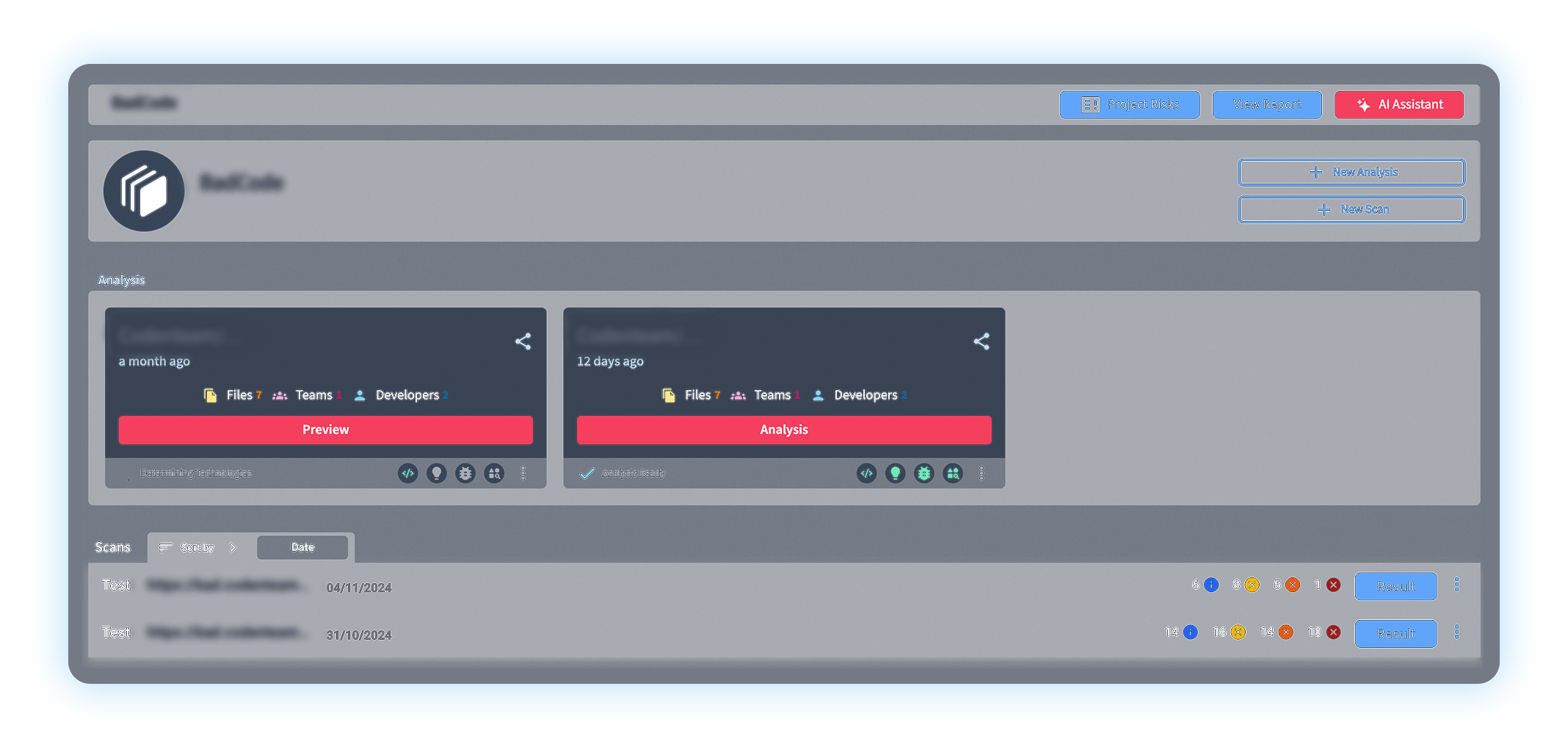
These steps provided a solid foundation for identifying and categorizing risks. After all scans were completed, it was time to generate the report.
Report Readout: Analyzing the Findings
The generated report served as the cornerstone of our analysis, bringing together data from various tools and processes. It highlighted a wide array of risks, including:
- Licensing Issues: Conflicts and restrictive clauses stemming from the use of incompatible licenses. These could pose legal and operational challenges if left unaddressed.
- Vulnerable Dependencies: The project relied on a specific version of Lodash with multiple vulnerabilities classified as critical, high, and medium severity. These issues could expose the codebase to potential exploits if not updated or replaced.
- Bad Coding Practices: The report included multiple bad coding practices with multiple critical, high and medium risks.
- Exploitable Vulnerabilities: Active penetration testing revealed an exploitable XSS flaw, which could compromise user data and system integrity.
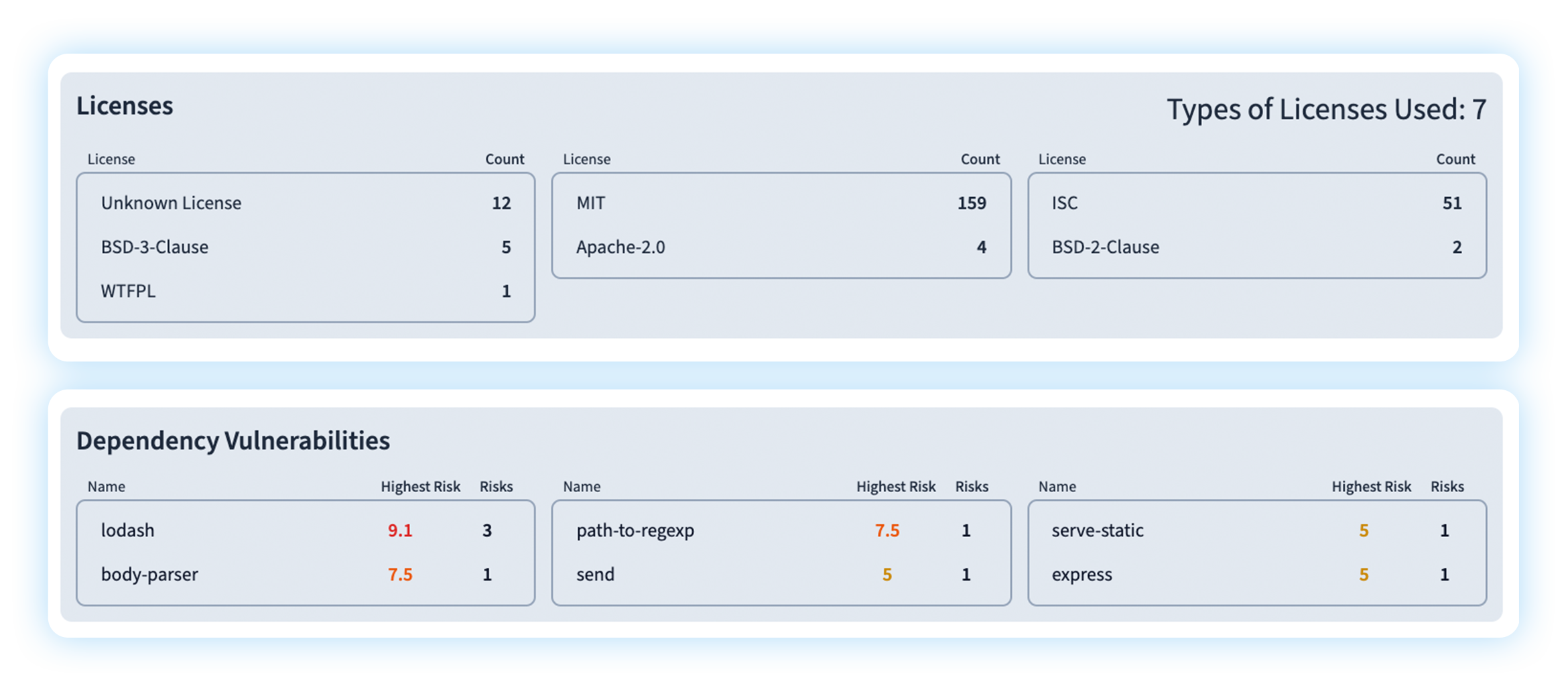
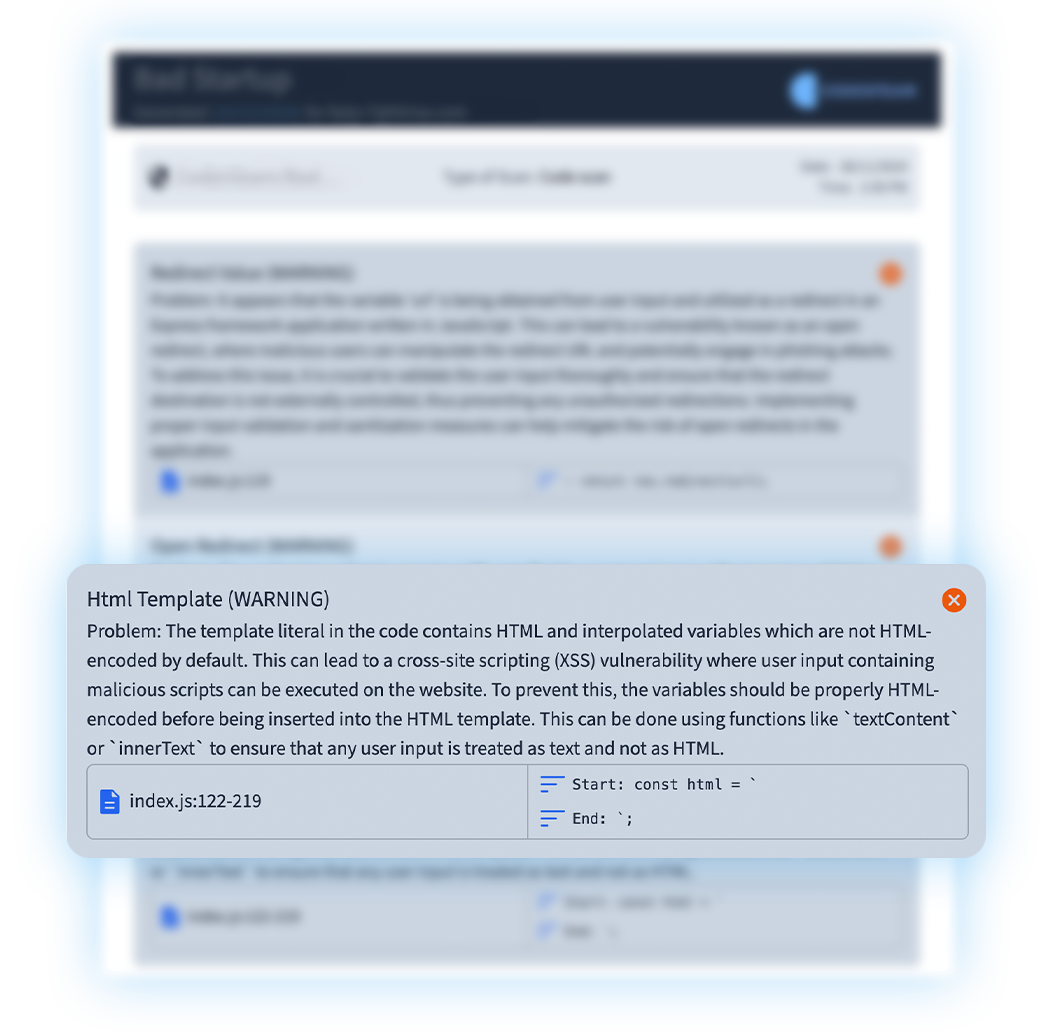
Report Readout: Analyzing the Findings
This comprehensive report laid the groundwork for the next phase of analysis. By identifying and categorizing each issue, we could begin prioritizing remediation efforts based on severity and impact.
Insights from the Dashboard: Decoding the Risks
With the report in hand, we turned to Codenteam’s dashboard for further analysis. Each risk was meticulously examined, starting with coding practices. The dashboard clearly highlighted how document.write was being used in a manner that exposed the application to potential XSS attacks.

For dependencies, the dashboard flagged the specific version of Lodash being used, noting its multiple vulnerabilities across severity levels. This information was invaluable for prioritizing remediation efforts.

Leveraging AI for Risk Analysis
The real magic began when we engaged Codenteam AI to delve deeper into the findings. The simplicity of asking, “What are the risks associated with the codebase?” belied the sophistication of the AI’s response. The analysis was precise and comprehensive, detailing:
- The implications of unsafe document.write usage.
- .How Lodash’s vulnerabilities could compromise the application’s integrity.
- The specific licensing clauses that posed risks.
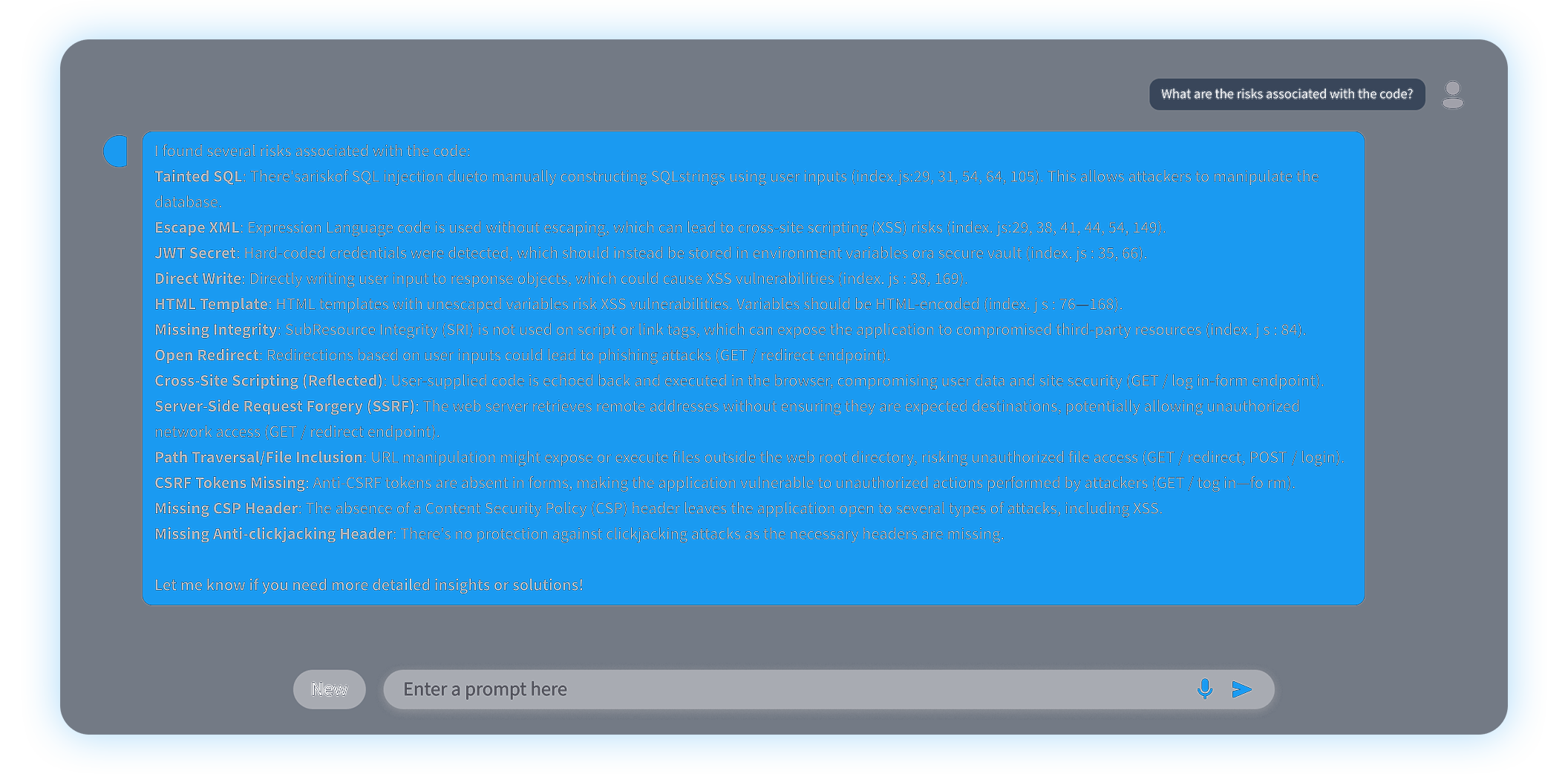
On the licensing front, the AI excelled in explaining the nuances of the issues. For instance, it pinpointed conflicts between restrictive licenses and the project’s requirements, suggesting alternative libraries with permissive licenses.

Connecting the Dots
Next, we tested whether the RAG database could connect findings from different scans to uncover root causes. Initially, the AI struggled to correlate specific code issues with pentest findings. However, when explicitly asked to identify the causing lines and files, it quickly provided detailed answers, including:
- The exact line where document.write was used unsafely.
- The corresponding pentest result showing how the vulnerability could be exploited.


This capability to link findings across different analyses is a game-changer. It allows teams to understand not just what the issues are but also how they interact and contribute to larger vulnerabilities. This holistic view is essential for effective remediation.
Root Cause Analysis
Delving deeper into the findings, we discovered that the majority of the problematic code was written by a single former developer who had since left the organization. This developer’s work introduced several of the identified issues, including the unsafe use of document.write, reliance on outdated dependencies, and poorly implemented security measures.


Given the current team’s workload and capacity constraints, addressing these issues internally wasn’t feasible. As a result, the team decided to prioritize hiring an external developer to tackle the most pressing vulnerabilities and ensure the codebase’s integrity.
Automating the Solution: From Risks to Recruitment
With the analysis complete, the next step was to address the identified issues. Codenteam’s HR module streamlined this process by:
- Automatically detecting the technologies used in the codebase from the analysis results.
- Crafting a job description tailored to the required fixes and upgrades.


Automating the Solution: From Risks to Recruitment
The job description included qualifications such as:
- Expertise in Express.js and JavaScript.
- Experience with secure coding practices to address the vulnerabilities.
- Knowledge of dependency management tools to update and replace depependnecies.
Within seconds, the position was ready to publish. This level of automation eliminated the need for manual intervention, saving valuable time.
Closing the Loop: Hiring the Right Talent
After publishing the job description, submissions started rolling in. Codenteam’s intelligent screening system identified candidates with relevant skills, ultimately connecting us with an engineer experienced in Express.js.
Upon hiring, this engineer was tasked with:
- Refactoring the unsafe use of document.write.
- Updating Lodash to a secure version or replacing it with an alternative library.
- Addressing licensing conflicts by reviewing and replacing problematic dependencies.
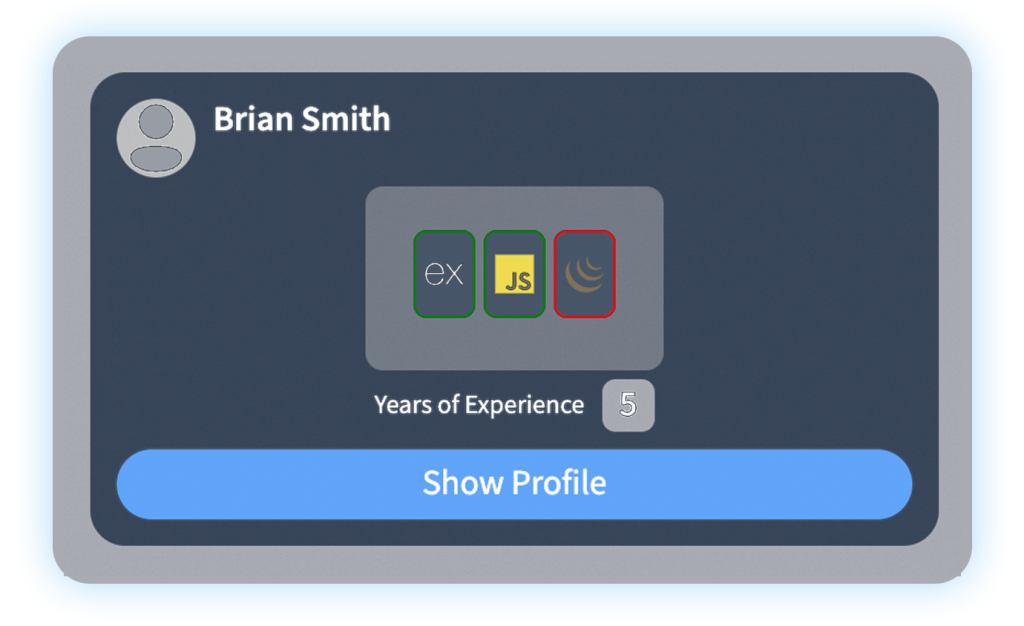
The streamlined hiring process exemplifies how Codenteam not only identifies and analyzes risks but also facilitates their resolution through AI-driven automation.
The First Incident of Combined LLM and RAG Analysis
This project marks a significant milestone: the integration of LLM for code analysis, RAG for root cause investigation, and a bot that combines these analyses into actionable insights. This trifecta allowed us to move from risk detection to resolution seamlessly.
Key takeaways include:
- Efficient Risk Detection: Multi-model analysis ensures comprehensive risk identification.
- Enhanced Understanding: AI-driven insights provide clarity on complex issues.
- Automated Processes: From risk analysis to recruitment, Codenteam reduces manual effort.
- Actionable Results: The combination of LLM and RAG connects the dots between findings, enabling holistic remediation.
Looking Ahead
Codenteam’s journey in this project demonstrates not just the power of technology but also the value of rethinking traditional processes. By integrating advanced tools and AI capabilities, we’re not just solving problems—we’re shaping the future of software development.

